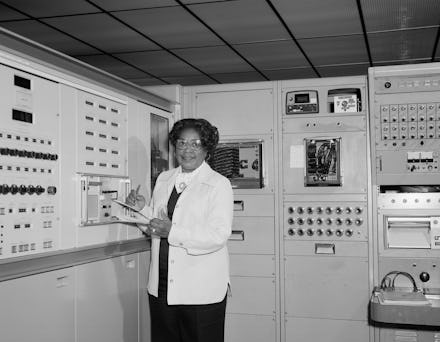NASA has renamed its headquarters after Mary W. Jackson, the agency's first Black female engineer

On Wednesday, NASA announced that the agency is renaming its headquarters in Washington, D.C. after Mary W. Jackson, a woman who stood against gender and racial discrimination to become NASA's first Black female engineer. Jackson was an influential mathematician and aerospace engineer who become a program manager, a position she used to hire and promote NASA's future female engineers.
"Mary W. Jackson was part of a group of very important women who helped NASA succeed in getting American astronauts into space," NASA Administrator Jim Bridenstine said in a press release. "Mary never accepted the status quo, she helped break barriers and open opportunities for African Americans and women in the field of engineering and technology."
Jackson was featured in Hidden Figures: The American Dream and the Untold Story of the Black Women Who Helped Win the Space Race, a book about the team of women who worked in the segregated area of NASA's Langley Research Center during the 1930s through 1960s. These highly educated women were employed as "human computers" who did mathematics and calculations by hand in an era when electronic computers weren't commonly used. But despite the importance of their work, Black female mathematicians like Jackson were segregated in the workplace and blocked from obtaining promotions or stepping into certain fields.
Jackson spent nearly 20 years as a NASA engineer, conducting experiments and writing research reports, but despite her myriad accomplishments she felt she still couldn’t fully break the glass ceiling that plagued many professional women at the time. Instead, she took a demotion, stepping down from engineering and becoming the federal women’s program manager at Langley. As the program manager, she worked hard to influence the hiring, education, and promotion of NASA's female engineers, mathematicians, and scientists.
The newly renamed building, previously known by the boring 'Two Independence Square,' is located on a part of E Street SW that was renamed 'Hidden Figures Way' in 2019, in honor of the segregated women of NASA.
"[The building] appropriately sits on 'Hidden Figures Way,' a reminder that Mary is one of many incredible and talented professionals in NASA's history who contributed to this agency's success," stated Bridenstine. "Hidden no more, we will continue to recognize the contributions of women, African Americans, and people of all backgrounds who have made NASA's successful history of exploration possible."
Carolyn Lewis, Jackson's daughter, said the family was "honored that NASA continues to celebrate the legacy of our mother and grandmother" and praised her for being "a scientist, humanitarian, wife, mother, and trailblazer who paved the way for thousands of others to succeed, not only at NASA, but throughout this nation."
Bridenstine explained in the press release that NASA intends to continue honoring those "who dedicated their lives to push the frontiers of the aerospace industry" by "naming facilities, renaming streets, and celebrating their legacy," among other awards.
"We know there are many other people of color and diverse backgrounds who have contributed to our success," he said, adding that "[the] nation is beginning to awaken to the greater need to honor the full diversity of people who helped pioneer our great nation."
To that end, "NASA is dedicated to advancing diversity, and we will continue to take steps to do so."